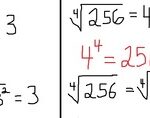With the focus on water conservation, many people forget to water their trees and the drought of the late summer months can be especially hard. Enter Autumn’s first rains, wind storms and first freezes and suddenly home owners and gardeners have a recipe for trouble. In fall, trees go dormant and deciduous trees lose their leaves. This means active root growth ends, even though trees will continue to absorb water and nutrients.
Fall Tree Care Tip #1 Water Your Tree
If a homeowner’s tree is showing brown or any signs of drought, give the tree a drink of water. Most trees have a deep enough root system that they don’t require watering. However, many patio trees or trees suitable for planting in your yard because they grow small root balls, may require water. If signs of drought have been a continuing problem, you might want to add mulch at the base of the tree to help retain water in the soil. Don’t dig around the roots of a tree because you may destroy them. Without adequate root growth or planted in a place where the roots can’t extend deep enough, home owner’s might find their tree blown over in the first wind [see photograph 1].
Fall Tree Care Tip #2 Plant Only Winter Hardy Trees
If homeowner’s have a tree that is planted in a place likely to cause trouble, fall is a good time to dig them up and move them, assuming they are small enough. Troublesome locations include: next to foundations or paths [see photograph 2], next to fences [see photograph 3], or in a place where it will topple onto your roof. If a homeowner plants a new tree, they should ensure that the soil and height requirements for the tree are met by the selected location, stake it well using expandable tapes. Unless the tree planted is capable of withstanding freezes, homeowners might want to wait until spring to plant it.
Fall Tree Care Tip # 3 Remove Trees Planted in Troublesome Locations
If a tree is planted next to a home’s foundation, grows too tall or too big of a root ball, homeowners should seriously consider removing the tree. Cut it down with a chain saw, piece by piece if small enough, or hire it down if it is a large tree. Then remove the root by hiring someone or chopping it out.
Fall Tree Care Tip # 4 Prune Trees for Safety and Accessibility
If a homeowner’s tree is several years old, you may limb up the tree to make it easier to walk past it on a sidewalk or path. Arborvitae can be sheared to fit your space requirements, but be sure to leave green growth. If a homeowner’s evergreen trees generate a second trunk, remove the newest otherwise most don’t need pruning. If a homeowner’s tree is small enough that you can handle it safely without help, prune to open up the crown, remove the upper limb of a too narrow crotch, remove or tie up the limb that is too wide. Also remove any dead or weak wood.
Fall Tree Care Tip # 5 Hire an Arborist to Prune Large Trees
If a home owner’s large trees have any of the following danger signs : too dense of a crown, too narrow of a crotch between limbs, too wide a crotch, dead or weakened wood, or a cavity in the trunk consult an expert arborist to aid them in pruning it. In addition, if a homeowner’s tree is located on a scenic view, an arborist can help them prune the tree to permit the scenery to shine through. Don’t top trees. Don’t remove trees on a hillside, they are probably a major source of erosion control.
Fall Tree Care Tip # 6 Clean Up Leaf Detritus
Remove leaves after they fall in autumn to ensure any plants below the tree get adequate water and light. Removing leaves also removes the environment that many insects that can damage your tree live in.
Fall Tree Care Tip # 7 Chop Up Fallen Branches and Chip
In Western WA, the recycle program allows branches in recycle bins up to 3 inches in width as long as they are chopped to fit easily in a container. Chipping machines can be hired or purchased and the resulting mulch is good for paths. Removing fallen branches [see photograph 4] prevents falls and twisted ankles, allows easy passage, and prevents further damage to plants underneath.
Fall Tree Care Tip # 8 Fertilize
Because trees continue to take up water and nutrients, late fall or early spring is a good time to fertilize a tree because winter rains will prevent chemical burn. Homeowner’s should make sure that they fertilize after first frost to prevent new tender growth from damage. Most trees don’t require fertilizer although fruiting and flowering trees may need it.
Fall Tree Care Tip # 9 Spray for Bugs
Depending on the insect that is attacking a homeowner’s tree, different bug sprays may be needed, see the Sunset Western Gardening Book or other guide to find the appropriate one to use. Fall is the best time to apply dormant spray on fruiting trees.
Fall Tree Care Tip # 10 Stake Trees and Protect against Pests
Young trees planted where wind may damage them should be staked until their root ball has grown big enough to support them. Protect against deer and other animal pests by placing a small fence around the base to keep young growth from being nibbled off and thus killing the tree.
[1] Sunset Western Landscaping
[2] Sunset Western Garden Book
[3] Botanika
[4] A-Z of Evergreen Trees and Shrubs



